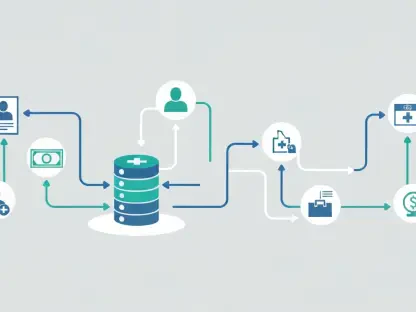Open-source software has revolutionized the world of modern applications, offering unparalleled cost savings and flexibility. More businesses now leverage these components to enhance their digital solutions with efficiency and innovation. However, this rise in adoption brings a significant downside—substantial security challenges. The growing reliance on open-source software has led to an alarming surge in associated vulnerabilities. As businesses integrate more open-source components into their codebases, the threats increase, necessitating robust security measures and vigilant risk management strategies.
Growing Prevalence of Vulnerabilities
A recent report has alarmingly revealed that a staggering 86% of commercial codebases now contain vulnerabilities. More disconcertingly, 81% of these vulnerabilities are categorized as high or critical, posing severe risks to business operations, data integrity, and security. A primary factor behind this dramatic increase in vulnerabilities is the explosive growth in the use of open-source files within commercial applications.
The extent of this surge becomes clear when considering the datfrom 2020 to 2024, the number of open-source files used in commercial applications has more than tripled from 5,300 to over 16,000 on average. This exponential growth complicates efforts to keep software secure and up-to-date. This heightened complexity in maintaining secure codebases underscores the urgent need for businesses to adopt comprehensive and effective security measures.
Unmonitored Open-Source Components
Jason Schmitt, CEO of Black Duck, emphasizes the complexities that organizations face in managing the security risks posed by open-source software. One of the primary challenges is the continual monitoring and updating of open-source components to mitigate vulnerabilities and compliance issues. Despite the critical importance of these actions, many organizations fail to maintain persistent vigilance over their open-source components, thus leaving systems exposed to cyber threats.
Adding to these concerns, Mike McGuire, Senior Manager at Black Duck, highlights that approximately 90% of reviewed codebases contain components that are at least four years outdated. This significant lag in updates presents a fertile ground for cyber attackers to exploit. These unmonitored and outdated components create gaps in security, further complicating the task for organizations trying to protect their data and applications from persistent threats.
Limitations of Current Scanning Tools
The OSSRA report identifies an alarming limitation in current scanning tools: only 77% of open-source dependencies in codebases are detected through package manager scanning. This glaring gap implies that a considerable number of components are being introduced by alternative methods, including AI coding assistants. As a result, tracking and managing security vulnerabilities effectively becomes even more challenging for security teams.
A particularly illustrative example of these challenges is found in jQuery, a widely-used JavaScript library. According to the report, jQuery is present in 43% of applications and is linked to eight of the top ten high-risk vulnerabilities. The persistence of these outdated versions of widely-used libraries signals a systemic issue with keeping popular open-source components current and secure, further exacerbating the risks posed to applications and systems globally.
The Issue of License Conflicts
License conflicts represent another significant issue adding to the complexity of managing open-source software. The report highlights that 56% of audited codebases contain some form of license conflict, commonly due to transitive dependencies. Transitive dependencies arise when primary software components rely on third-party libraries that have their own distinct licensing terms. These conflicts can result in major legal risks and complicate the software management process.
Moreover, a striking 33% of codebases include open-source components that lack proper licensing or have custom licenses. This scenario adds substantial legal and compliance risks, creating further hurdles for businesses. Addressing these issues is pivotal; failure to do so could result in profound operational disruptions and potentially costly legal repercussions.
Importance of SBOMs and Proactive Governance
Trey Ford, CISO at Bugcrowd, underscores the paramount importance of Software Bill of Materials (SBOMs) in combating licensing and security risks. SBOMs enable transparency by documenting each open-source component used within an application, thereby addressing potential problems before they escalate. This transparency plays a crucial role in mergers and acquisitions, helping to establish trust and minimize risks during such transactions.
Jason Soroko, Senior Fellow at Sectigo, stresses the necessity of proactive governance in tackling the security challenges posed by open-source software. Traditional security measures fall short in keeping pace with the rising number of outdated open-source files, necessitating more rigorous and forward-thinking approaches. By embracing proactive governance, organizations can significantly enhance their ability to manage and mitigate the inherent risks in open-source usage.
Challenges Extending to API Security
Eric Schwake, Director of Cybersecurity Strategy at Salt Security, points out that the vulnerabilities found in open-source components extend to Application Programming Interfaces (APIs). APIs often rely on open-source libraries, making them susceptible to attacks if these libraries contain vulnerabilities. Without proper protection, attackers can exploit these weaknesses to breach API endpoints and gain access to sensitive information.
To mitigate these risks, it’s essential to adopt a comprehensive approach to API Posture Governance. This includes robust vulnerability scanning and thorough risk evaluations to ensure API security. By implementing these measures, organizations can significantly improve their defenses against potential threats, maintaining the integrity and security of their APIs.
Recommendations for Enhanced Security
To bolster open-source software security, several recommendations have been put forward. Embedded software providers must prioritize software quality, safety, and reliability, particularly in critical sectors such as aerospace and healthcare, where failures can lead to catastrophic outcomes. By emphasizing these attributes, providers can enhance the security and resilience of their software solutions.
Independent software vendors must focus on diligently monitoring and resolving license conflicts. Given the high prevalence of licensing issues, compliance with licensing terms is vital to upholding legal and operational integrity. Taking proactive steps to address these conflicts can significantly mitigate potential legal risks and ensure smooth operations.
Focus on Enterprise Regulated Organizations
The advent of open-source software has significantly transformed modern application development, delivering unmatched cost savings and extraordinary flexibility. Nowadays, an increasing number of businesses are utilizing these components to boost the efficiency and innovation of their digital products. Nevertheless, this growing trend brings with it considerable security issues. The heightened dependence on open-source software has resulted in a worrisome increase in vulnerabilities. As companies incorporate more of these open-source elements into their codebases, the risks multiply, making strong security measures and careful risk management strategies essential. To protect their systems effectively, businesses must remain vigilant, continuously updating and monitoring their security protocols. As the landscape of technology evolves, balancing the benefits of open-source software with the imperative for security becomes increasingly crucial. Therefore, it’s vital that organizations not only recognize the advantages but also address the inherent threats to maintain a secure and resilient digital infrastructure.









